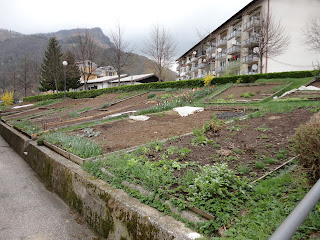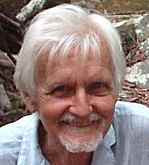In spite of it being Easter upon my arrival in Brno in the Czech Republic, the lectures were unusually well attended by a very enthusiastic group of people, all wishing to know more and more about how they could improve their quality of life.
In all the countries that I visited, I was informed that although it most certainly was cold, and mostly wet at the time, and to be expected, the weather this year had been most unusual. Not at all how they had become used to. In fact this year, so I was informed, seen less snow-fall than usual. In past years, at the time of my visits, the mountains would be snow-capped. This year there was no snow to be seen.
As was usual, I did not speak the language, nor did enough of the audience speak enough English for us to communicate without a transalator. I was greatly blessed in having Lucy to fulfill this role, for not only was she fluent in both languages, she also had a sense of humour. And as well can be understood, when you are spending up to three or more hours translating an unknown subject, it is vitally necessary.
Easter Sunday fell during my visit to Brno. With my love of organ music, I took the opportunity to attend the service at the local cathedral. The Czech Republic having only in the recent years emerged from communism, I was a little surprised by the large number of people attending the service. I was standing at the back of the church which, by the time the service commenced, was packed with many others standing with me.
It was indeed a joy to see the preservation of the trams(trolleys in the US, and becoming known as light rail around the world).
Larger and more modern versions of trams have been added to the system. All in all, I saw three different models, each model a little more sophisticated and streamlined.
One of the joys of this time of the year is the advent of Spring and the blossoming of the trees as they set their fruit and leaves.
And then to Prague. Said to be one of the most beautiful cities of Europe, if not of the world. Not having as yet visited them all, I do not feel in the position to comment. Except that is, that I agree wholeheartedly that it is indeed a beautiful city.
Of the many beautiful churches in Prague, due to limited time, I was only able to visit one of them, which can readily be seen to be very ornamated and intricate in its design.
The number of statues and fountains is legion. I trust that this small offering will suffice for the moment. perhaps even wet your appetite to visit and see for yourself.
As in Brno, it still being Easter, the nimbers attending the lecture(s) was small - but very enthusiastic.

The Charles Bridge is a famous historic bridge that crosses the Vltava river in Prague, Czech Republic. Its construction started in 1357 under the auspices of King Charles IV, and finished in the beginning of the 15th century. As the only means of crossing the river Vltava (Moldau) until 1841, the Charles Bridge was the most important connection between Prague Castle and the city's Old Town and adjacent areas. This "solid-land" connection made Prague important as a trade route between Eastern and Western Europe. The bridge was originally called the Stone Bridge (Kamenný most) or the Prague Bridge (Pražský most) but has been the "Charles Bridge" since 1870.
The bridge is 516 meters long and nearly 10 meters wide, resting on 16 arches shielded by ice guards. It is protected by three bridge towers, two of them on the Lesser Quarter side and the third one on the Old Town side. The Old Town bridge tower is often considered to be one of the most astonishing civil gothic-style buildings in the world. The bridge is decorated by a continuous alley of 30 statues and statuaries, most of them baroque-style, originally erected around 1700 but now all replaced by replicas.
During the night the Charles Bridge is a quiet place. But during the day it changes its face into a very busy place, with painters, owners of kiosks and other traders alongside numerous tourists crossing the bridge.
- Source www.wikipedia.org

Here we see a jazz band busking on the bridge.
One of the locals re-enacting the part of a soldier of the period when the bridge was first built. The crush of people, as can well be seen, was so grat that it was difficult to take this photo.

This is the entrance to a special local school in Prague teaching the children about sustainability and the environment.
And this are the signs at the entrance advertising the teaching available to the students attending the school.






























